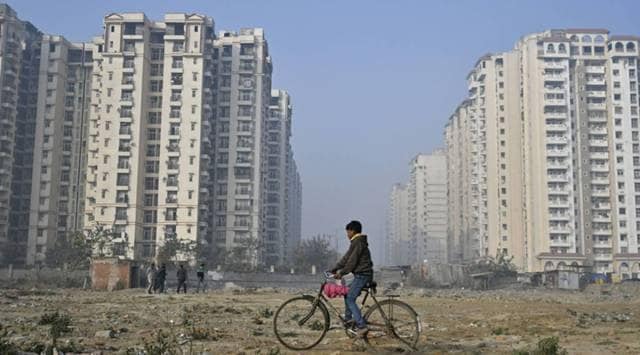State releases Housing Policy 2025, targets to build 50 lakh houses in 10 years
As part of the policy, the government proposes to construct 35 lakh houses in five years. Further, the government plans to increase the size of MahaAwas Fund to Rs 20,000 crore.
 The policy, which focuses on housing for all, aims to be a slum-free state by laying emphasis on economically weaker sections (EWS), lower income group (LIG) and middle income group (MIG) segments of the policy. (Representative image)
The policy, which focuses on housing for all, aims to be a slum-free state by laying emphasis on economically weaker sections (EWS), lower income group (LIG) and middle income group (MIG) segments of the policy. (Representative image)In a bid to pursue its vision of ‘My House, My Right’ by 2030, the state government on Wednesday released a resolution on the Housing Policy 2025, for the implementation of which the government is expecting an investment of Rs 70,000 crore.
According to the policy, the government proposes to carry out a comprehensive programme for slum rehabilitation and redevelopment. The specific needs of low-income earners, senior citizens, women, industrial workers and students will be given priority consideration in the policy.
As part of the policy, the government proposes to construct 35 lakh houses in five years. Further, the government plans to increase the size of MahaAwas Fund to Rs 20,000 crore.
“The ultimate target is to build 50 lakh houses in the next 10 years…To achieve this ambitious target, existing provisions under the Development Control and Promotion Regulations/Unified Development Control and Promotion Regulations and relevant institutional frameworks will be strengthened and modified as needed. Additionally, active participation from the private sector will be promoted through a range of incentive-based measures,” the policy said.
“The state level portal will soon be developed for providing information on housing development through government private sector partnership, through developers and also through state-run undertakings,” it said.
The policy, which focuses on housing for all, aims to be a slum-free state by laying emphasis on economically weaker sections (EWS), lower income group (LIG) and middle income group (MIG) segments of the policy.
The policy proposes affordable housing initiatives, redevelopment of old buildings to improve living conditions, optimization of land use and transformation of slums through public-private partnerships. It promotes inclusive housing by capturing resources created by the private market, integrated townships that offer affordable housing with essential services, and industrial workers’ housing to ensure proximity to workplaces.
Affordable housing has been given infrastructure status. This enables the developers to avail external commercial borrowing (ECB) and foreign direct investment (FDI) for their projects. It is also a sector eligible for priority sector lending (PSL) from banks and HFCs.
On the concept of Walk to Work, around 10 per cent to 30 per cent land will be reserved for housing in MIDC (Maharashtra Industrial Development Corporation) areas. Such land should be handed over to the appropriate authority at the applicable acquisition price, so that authority can create adequate housing stock in such areas. The authority can also partner with the private industries to provide housing for industrial workers in a public-private partnership model. The policy proposes to reserve 10per cent to 15per cent of the land suitable for housing projects adjacent to the ambitious infrastructure projects (such as Samruddhi highway, Delhi Mumbai Industrial Corridor).
The policy focuses on green building initiatives to promote sustainable development through eco-friendly practices and certifications. To ensure inclusive development, the policy also attempts to address affordable housing for other vulnerable groups such as senior citizens, working women, students, project affected persons (PAPs) and migrant workers.
Amid burgeoning challenges due to climate change, the policy advocates construction of resilient housing towards climate change mitigation and adaptation.
The policy proposes a slew of incentives including single window clearance, 1 per cent GST, floor space index (FSI) up to 2.5 per cent, commercial use permitted up to 10 per cent of utilised FSI, concession in development changes, waiver of registration and stamp duty charges to the operators, reduced property tax for the first 10 years of operation and 100% deduction on the profit of operating student housing.
In case of slum rehabilitation schemes on public land, the slum rehabilitation schemes can be implemented in a joint venture by setting up a special purpose vehicle (SPV) and adopting the Dharavi model of 20:80. For this purpose, the initiative will require the Slum Rehabilitation Authority (SRA) to set up a special purpose company, in which the SRA should hold a 20 per cent stake with voting rights.












